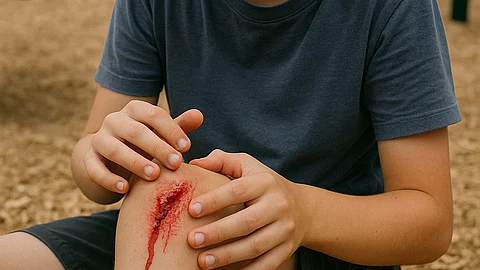Inflammatory Response
Following hemostasis, increased blood flow (hyperemia) brings immune cells to the wound site, including neutrophils, macrophages, and lymphocytes. These cells clear pathogens, dead tissue, and cellular debris. This response is essential for preventing infection and setting the stage for tissue regeneration.
However, if inflammation becomes chronic, fibroblasts can be damaged. Similarly, in immunosuppressed individuals, a poor immune response can lead to infections. Both scenarios delay healing.
Fibroblast Activity
Around 2–3 days after injury, fibroblasts migrate from surrounding healthy tissue into the wound. They lay down collagen fibers and form the extracellular matrix, creating the foundation for new tissue.
In wounds that heal quickly, fibroblasts respond rapidly and work efficiently. In contrast, aging, diabetes, and infections can impair fibroblast function, slowing the healing process.
Angiogenesis
Part of the proliferative phase, angiogenesis is the formation of new blood vessels to supply oxygen and nutrients to regenerating tissue. This process is regulated by several growth factors, including:
Vascular Endothelial Growth Factor (VEGF)
Fibroblast Growth Factor (FGF)
Angiopoietins
Transforming Growth Factor-β (TGF-β)
Platelet-Derived Growth Factor (PDGF)


